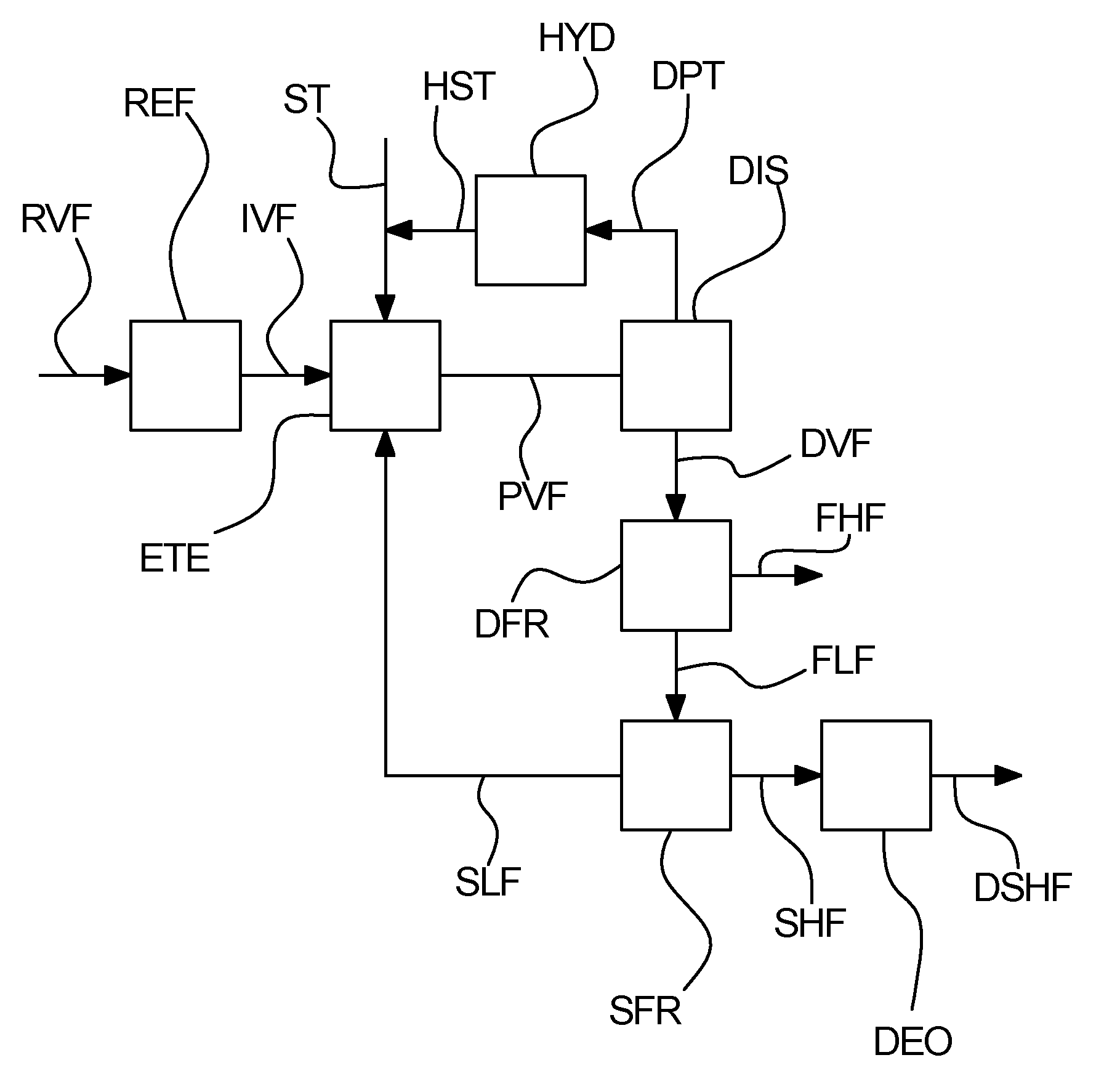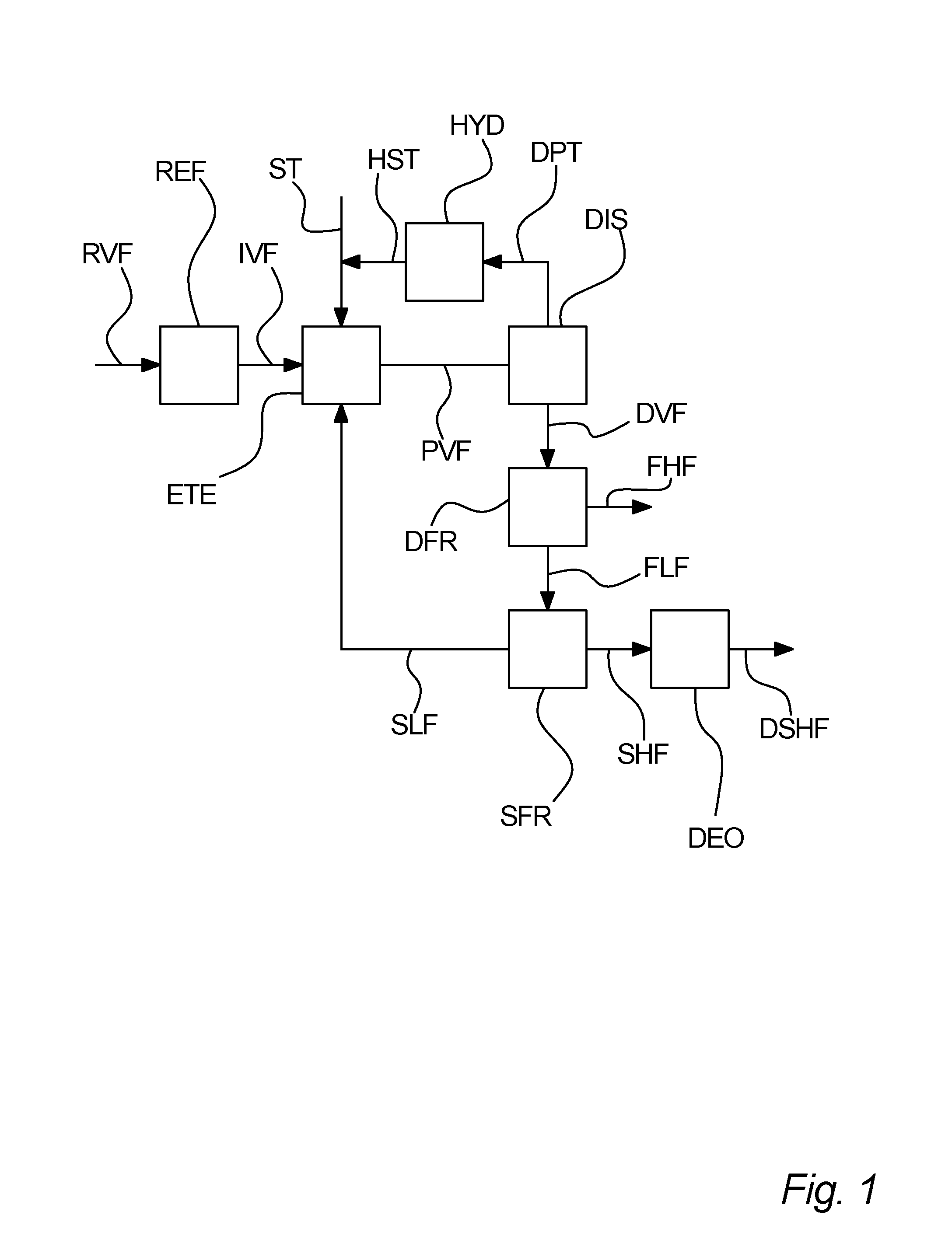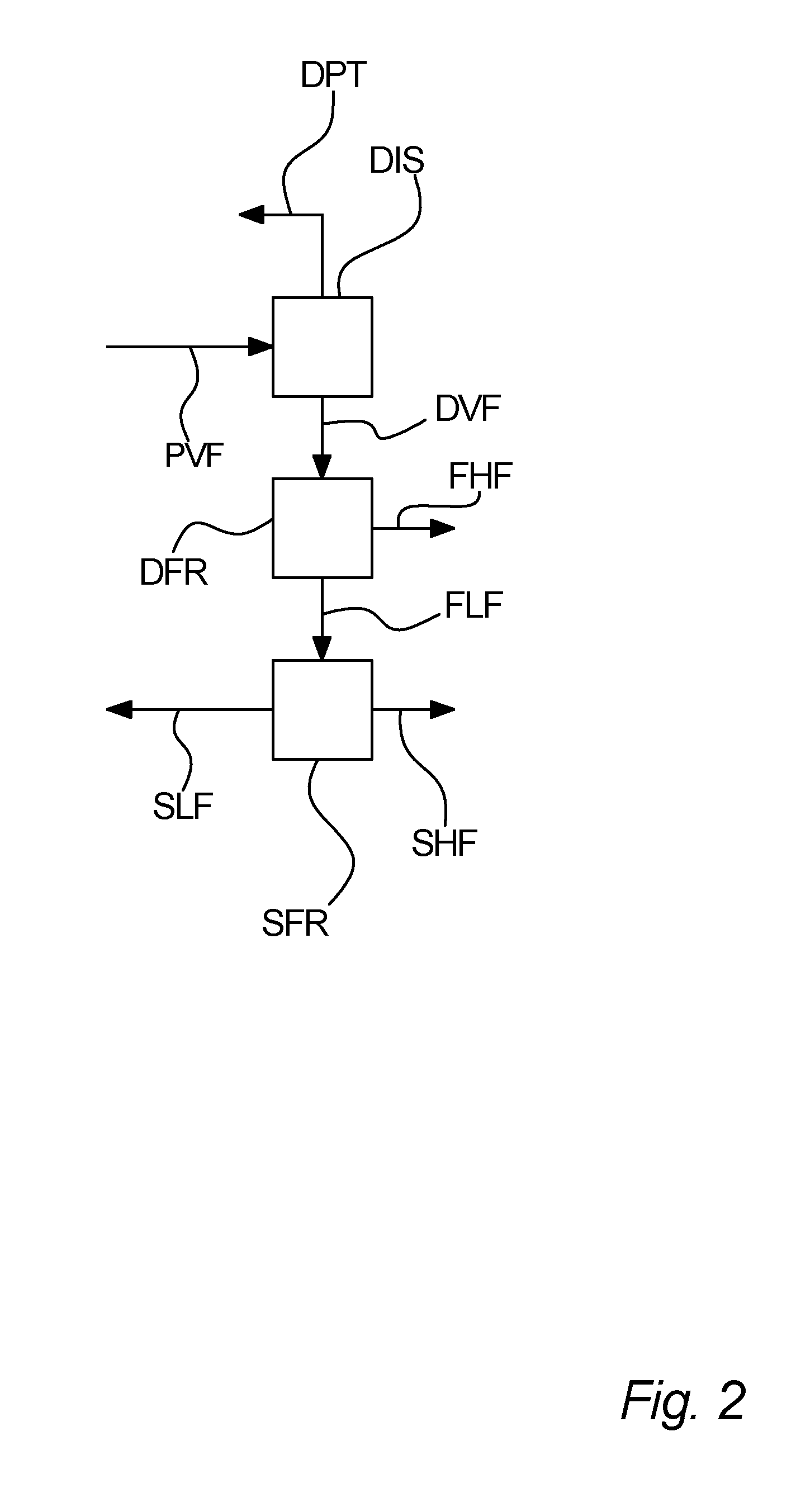Process for separation of a processed vegetable fat
a vegetable fat and processing technology, applied in the separation of fatty oils/fats, fatty-oils/fats, fermentation, etc., can solve problems such as inapplicability, and achieve the effects of reducing melting points, facilitating handling, and high melting points
- Summary
- Abstract
- Description
- Claims
- Application Information
AI Technical Summary
Benefits of technology
Problems solved by technology
Method used
Image
Examples
example 1
[0145]A first sample of an enzymatic transesterified shea olein fraction is subjected to distillation in order to separate unused methyl stearate from the transesterification and methyl oleate, which is a bi-product from the transesterification into a distillate. The distilled first sample is then inputted to a first fractionation, which is a dry fractionation process, the first fractionation giving a first higher melting point fraction and a first lower melting point fraction. The first lower melting point fraction is then subjected to a second fractionation, being hexane solvent fractionation, giving a second higher melting point fraction and a second lower melting point fraction. The concentration of StSt diglycerides in the first sample in for each fraction is measured. These measured concentrations are listed in table I.
[0146]
TABLE IReductionReductionConcentrationof StStof StStof StSt(abs.)(percentage)Distilled first2.8N / AN / Asample1st higher melting16.5N / AN / Apoint fraction1st l...
PUM
| Property | Measurement | Unit |
|---|---|---|
| temperature | aaaaa | aaaaa |
| temperature | aaaaa | aaaaa |
| temperature | aaaaa | aaaaa |
Abstract
Description
Claims
Application Information
 Login to View More
Login to View More - R&D
- Intellectual Property
- Life Sciences
- Materials
- Tech Scout
- Unparalleled Data Quality
- Higher Quality Content
- 60% Fewer Hallucinations
Browse by: Latest US Patents, China's latest patents, Technical Efficacy Thesaurus, Application Domain, Technology Topic, Popular Technical Reports.
© 2025 PatSnap. All rights reserved.Legal|Privacy policy|Modern Slavery Act Transparency Statement|Sitemap|About US| Contact US: help@patsnap.com



